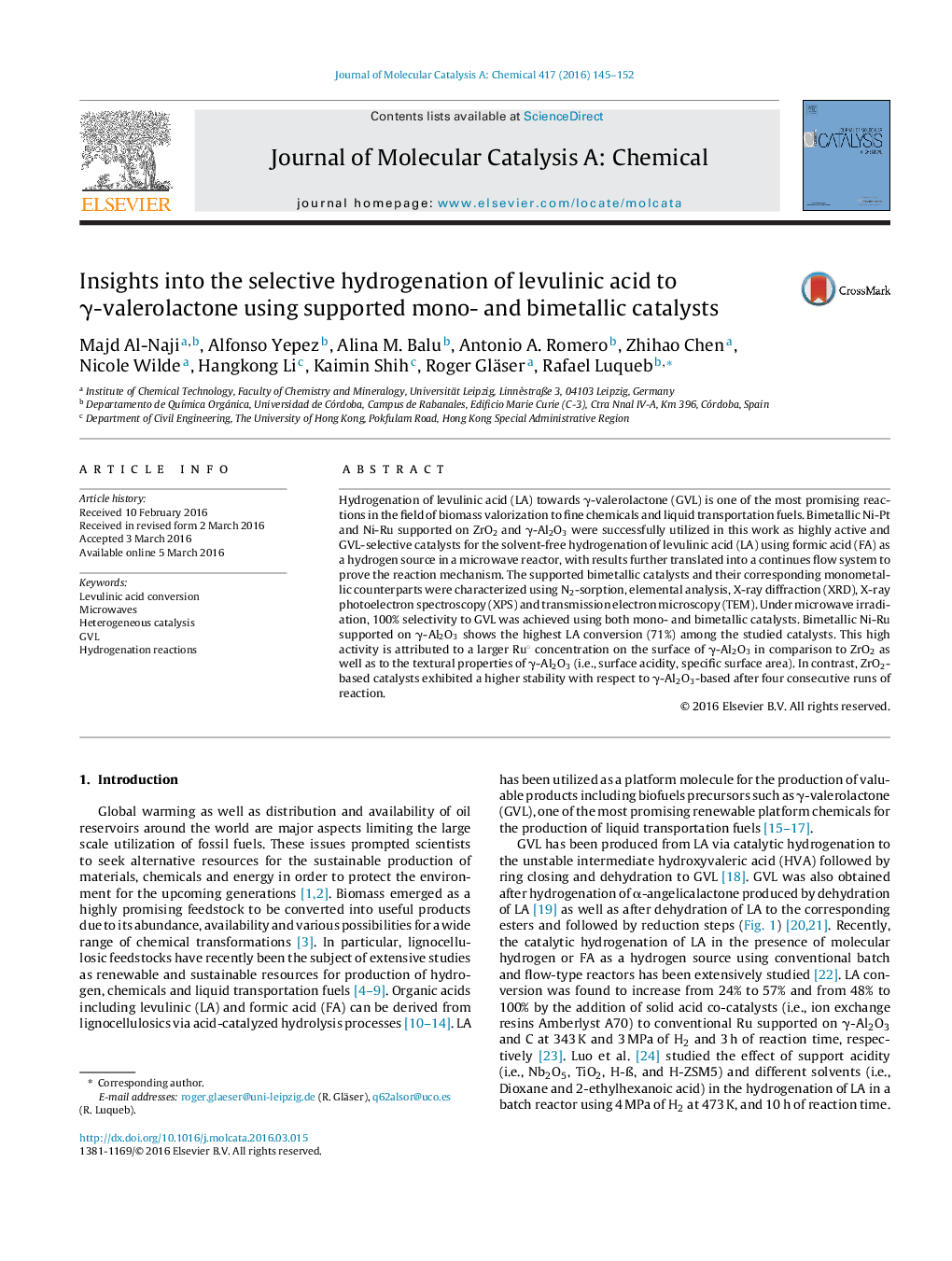| کد مقاله | کد نشریه | سال انتشار | مقاله انگلیسی | نسخه تمام متن |
|---|---|---|---|---|
| 64654 | 48364 | 2016 | 8 صفحه PDF | دانلود رایگان |

• Hydrogenation of levulinic acid using supported metal nanoparticles.
• Mono- and bimetallic systems highly active and selective to GVL.
• High conversion in microwave-assisted reactions, typically 60–90 min.
• Bimetallic Ni-Ru supported on γ-Al2O3 exhibited best GVL yields.
• Insights into reaction pathways and intermediates proposed.
Hydrogenation of levulinic acid (LA) towards γ-valerolactone (GVL) is one of the most promising reactions in the field of biomass valorization to fine chemicals and liquid transportation fuels. Bimetallic Ni-Pt and Ni-Ru supported on ZrO2 and γ-Al2O3 were successfully utilized in this work as highly active and GVL-selective catalysts for the solvent-free hydrogenation of levulinic acid (LA) using formic acid (FA) as a hydrogen source in a microwave reactor, with results further translated into a continues flow system to prove the reaction mechanism. The supported bimetallic catalysts and their corresponding monometallic counterparts were characterized using N2-sorption, elemental analysis, X-ray diffraction (XRD), X-ray photoelectron spectroscopy (XPS) and transmission electron microscopy (TEM). Under microwave irradiation, 100% selectivity to GVL was achieved using both mono- and bimetallic catalysts. Bimetallic Ni-Ru supported on γ-Al2O3 shows the highest LA conversion (71%) among the studied catalysts. This high activity is attributed to a larger Ru° concentration on the surface of γ-Al2O3 in comparison to ZrO2 as well as to the textural properties of γ-Al2O3 (i.e., surface acidity, specific surface area). In contrast, ZrO2‐based catalysts exhibited a higher stability with respect to γ-Al2O3-based after four consecutive runs of reaction.
Figure optionsDownload high-quality image (167 K)Download as PowerPoint slide
Journal: Journal of Molecular Catalysis A: Chemical - Volume 417, June 2016, Pages 145–152